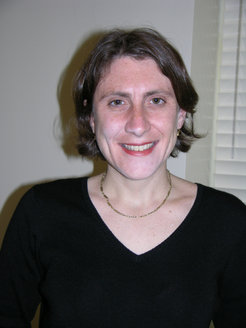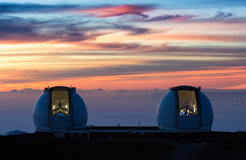New Probes of Distant Galaxies and Their Cosmic Environments During the Peak Epoch of Star Formation
By Professor Alice Shapley, UCLA, Dept. of Physics and Astronomy
Understanding the formation and evolution of galaxies remains one of the great challenges of modern cosmology. Key outstanding questions include: What are the physical processes driving the formation of stars in individual galaxies? How do galaxies exchange matter and energy with their intergalactic environments? How does the impressive variety of galactic structures that we observe today assemble? How do supermassive black holes affect the evolution of their host galaxies? And how do large-scale structures of galaxies assemble across cosmic time? Professor Alice Shapley is an expert on galaxy formation and evolution in the early universe. In this year's 2018 Biermann Lectures, Professor Shapley will address these important questions in galaxy formation using new results from powerful ground-based and space-based facilities.

Today’s galaxies are relatively quiet. In our Milky Way, for example, an average of only three stars is born in any given year. During the peak epoch of cosmic star formation, however, some 10 billion years ago, the rate of star formation in a typical galaxy was more than an order of magnitude higher, and many of the patterns that we observe in the galaxy population today were not yet in place. Based on images and spectra from powerful telescopes operating today, astronomers can study these distant galaxies and their environments in more detail than ever before. In this year’s Biermann lectures, Alice Shapley will explain what we know about distant galaxies observed during the peak epoch of star formation, and how these galaxies can teach us about the even earlier cosmic phase transition known as Reionization and the evolution of large-scale structure in the universe.
Alice Shapley’s main research interest is in how galaxies form, evolve, and interact with their intergalactic environments over cosmic time. She uses telescopes both on Earth and in space to collect images and spectra of extremely distant galaxies. Recently, she performed a large survey of the rest-frame optical spectra of a statistical sample of distant galaxies using the MOSFIRE near-infrared spectrograph on the Keck telescope. She is currently leading a large program of Hubble Space Telescope observations to constrain the contribution of star-forming galaxies to cosmic Reionization.

After studying astronomy, astrophysics, and physics at Harvard-Radcliffe University, Alice Shapley obtained her PhD from the California Institute of Technology in 2003 with a thesis entitled “Detailed Astrophysical Properties of Lyman Break Galaxies.” She was a Miller Postdoctoral Fellow at the University of California, Berkeley, Assistant Professor in the Department of Astrophysical Sciences at Princeton University, and is now Professor in the Department of Physics and Astronomy at the University of California, Los Angeles. She has been awarded many honors for her research, including Sloan and Packard Fellowships, and the Aaronson Memorial Lectureship.
Overall title:
New Probes of Distant Galaxies and Their Cosmic Environments During the Peak Epoch of Star Formation
Thursday, July 5:
Insights into the Physical Properties of Galaxies at High Redshift
Thursday, July 12:
The Search for Ionizing Radiation at High Redshift
Thursday, July 19:
Tracing the Formation of Large-scale Structure in an Exceptional Distant Proto-Cluster
All lectures start at 15:30 in the MPA Large Seminar Room E.0.11 and will be preceded by tea, coffee and cookies at 15:15.

